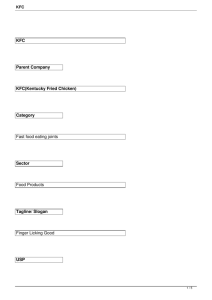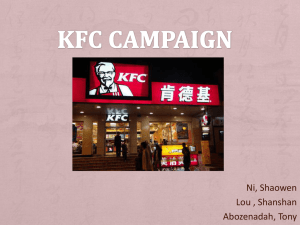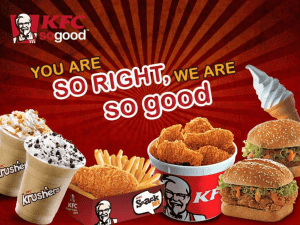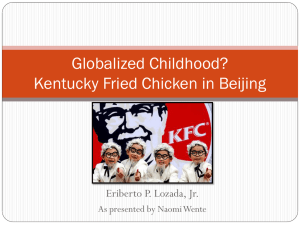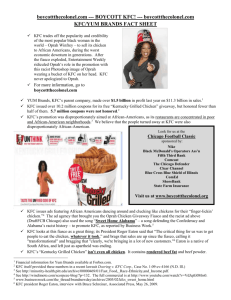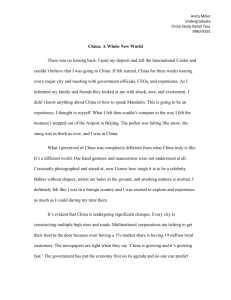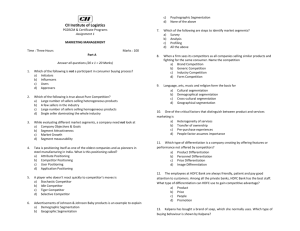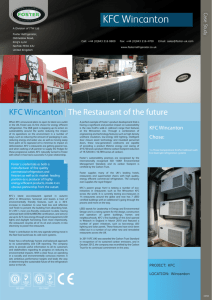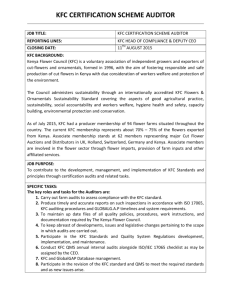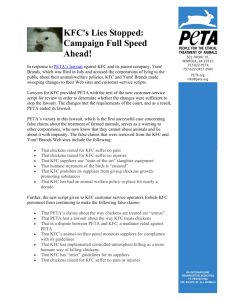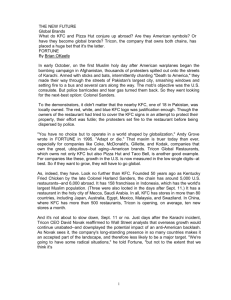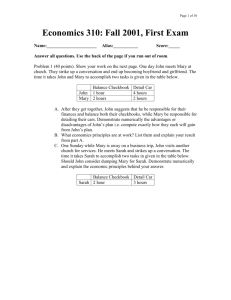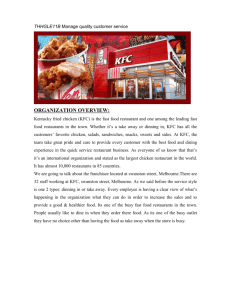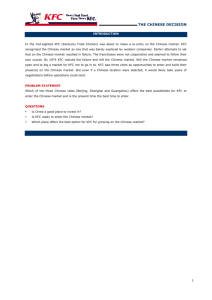Globalized Childhood? Kentucky Fried Chicken in Being
advertisement
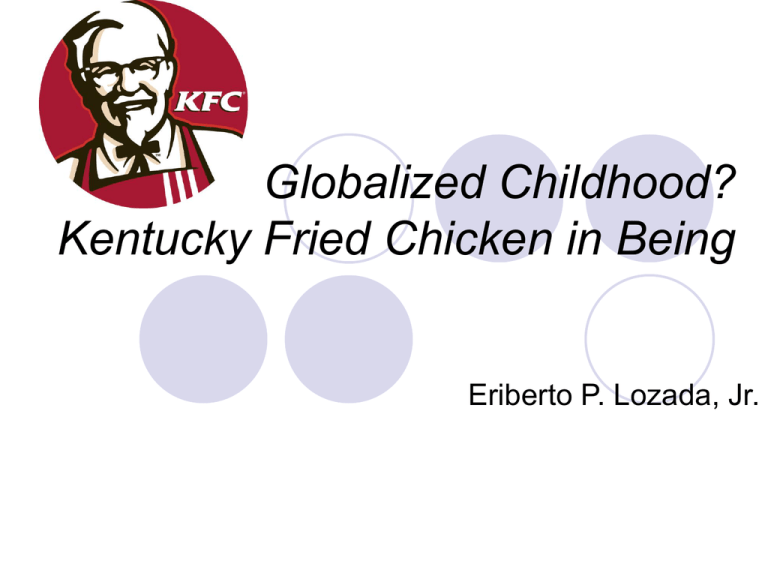
Globalized Childhood? Kentucky Fried Chicken in Being Eriberto P. Lozada, Jr. Background Transnational organizations Provide support for movement Two perspectives “concrete model of globalization ”(Marilyn Strathern ) culture implications of transnational processes Chinese Children “Little king” and “little sun” (birth policy) History 1987 The first KFC opened in Qianmen area of Beijing(2000 to 3000 customers a day) 1988 It fried 2200 chickens a day 1994 KFC had 7 restaurants in Beijing and 21 in other cities Strategy Recognizable symbol: Chicky (a cartoon character that KFC hopes Chinese children will associate with KFC, also an advertisement on children’s stuff) Playing place and big store for birthday party Toys and patient waitress Localization Competition: KFC vs Glorious China Chicken KFC Glorious China Chicken Big place, large window, takeout window with full menu Bored waitress and unpleasant manager, less varieties, cheaper, more Chinese Worse bathroom Good sanitary facilities Clean constantly (different from U.S.) Clean constantly Delivery services No Kids Adults Chicken frying and transnational politicking Local managers are given operational autonomy from Louisville, Kentucky and Purchase, New York to determine the relationship between KFC and Chinese government, as long as they achieve “results with integrity”-standards that are spelled out in the KFC Code of Conduct. KFC launched its operations from the political power center, Beijing Decentralization: chicken goes bad quickly and there is little time for KFC staff to consult with superiors about decisions. “Cock Fight”: competing and learning Chinese companies in major cities sought to form jointventure operations with KFC Reducing prices(1990) Changing strategy: 1987,40 percent of the raw materials for its menu were imported, 1991, only 3percent had to be imported because the local development of the fastfood industry Chinese learning for essence, western learning for utility In the late 1970s, increasing levels of individual consumption. To have a taste of modernity, people have desire to eat western food More varieties for choosing Localization Localization Chinese culinary tradition Chinese taste( rise, vegetables) Launch new choices constantly Toys Working with schools and finding young consumers KFC sponsors numerous children’s sporting events, essay competitions, and other contests. International Children Day (June 1,1993) An important role in this stratification of Chinese childhood. (enjoyable family event) One child policy: little king and little sun Television-Advertisement Habits Conclusion Taste foreign( you can not make KFC at home, modernity, have fun) Localization( something you cannot buy in American, KFC have to ensure that people are interested and supportive of their message ) Uniqueness( there are so many fast-food restaurants now) Thank you !
